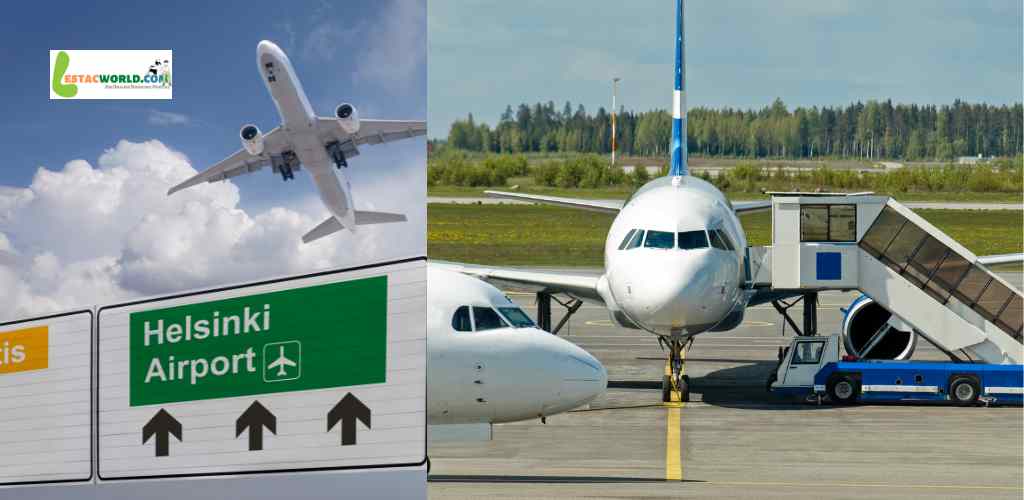Important to know about Helsinki Airport
History timeline of Helsinki Airport
Frequently asked questions about Helsinki airport ?
How Far is Helsinki Airport from the City Center?
Helsinki Airport is located approximately 17 kilometers (about 10.5 miles) north of the city center. The most common modes of transportation to and from the airport include taxis, buses, and the Ring Rail Line train.
What Terminals Does Helsinki Airport Have?
Helsinki Airport has two terminals: Terminal 1 and Terminal 2. Both terminals are connected, and passengers can easily transfer between them.
Is There Free Wi-Fi at Helsinki Airport?
Yes, Helsinki Airport offers free Wi-Fi throughout its terminals. Passengers can connect to the airport's Wi-Fi network to access the internet.
Are There Currency Exchange Services at the Airport?
Yes, currency exchange services are available at Helsinki Airport. There are currency exchange offices and ATMs where passengers can withdraw cash.
How Early Should I Arrive for International Flights?
It is generally recommended to arrive at least two to three hours before the scheduled departure time for international flights. This allows time for check-in, security checks, and other necessary procedures.
Are There Duty-Free Shops at Helsinki Airport?
Yes, Helsinki Airport has duty-free shops where passengers can purchase a variety of goods, including cosmetics, electronics, and Finnish souvenirs.
What Public Transportation Options are Available from the Airport?
Helsinki Airport is well-connected to the city and surrounding areas via public transportation. The Ring Rail Line train, buses, and taxis provide convenient options for travel.
What is the difference between Schengen and non-Schengen areas at Helsinki airport ?
Helsinki Airport has both Schengen and non-Schengen areas, and they are clearly separated to facilitate international travel within the Schengen Area and beyond. Here's an overview:Schengen Area:The Schengen Area is a zone comprising 27 European countries that have abolished passport control at their mutual borders, allowing for the free and unrestricted movement of people within this zone.
At Helsinki Airport, the Schengen Area includes specific gates, check-in counters, and lounges dedicated to flights within the Schengen Zone. Passengers traveling to other Schengen countries will go through security and passport control within this designated area.
Non-Schengen Area:The non-Schengen Area at Helsinki Airport is for flights that are departing to or arriving from countries outside the Schengen Zone.
Passengers traveling to or arriving from non-Schengen countries will go through separate passport control and security checks in the non-Schengen section of the airport.
Gates and facilities for non-Schengen flights are distinct from those in the Schengen Area to ensure the proper separation of international and intra-Schengen passengers.
When departing or arriving at Helsinki Airport, it's important to follow the signs and directions to the appropriate Schengen or non-Schengen areas based on your specific travel itinerary. The airport is designed to provide a smooth and efficient experience for passengers traveling within the Schengen Zone and those traveling internationally.
List of food outlets/ restaurants at Helsinki airport ?
Cafes and Bakeries:Look for cafes and bakeries that offer coffee, pastries, and light snacks.
Fast Food Outlets:International fast-food chains may have a presence at the airport, providing quick and familiar meal options.
Sit-Down Restaurants:Helsinki Airport has sit-down restaurants where you can enjoy a more leisurely meal with a variety of cuisines.
Bars and Pubs:Bars and pubs are available for those who want to relax with a drink and possibly a light meal.
Grab-and-Go Options:Several outlets offer grab-and-go options, allowing passengers to quickly pick up sandwiches, salads, or other ready-to-eat items.
Local Finnish Cuisine:Explore options that showcase local Finnish cuisine for a taste of the region.
Duty-Free Restaurants:Restaurants within the duty-free areas often provide a range of meal choices for passengers.
Specialty Food Outlets:Some outlets may specialize in specific types of cuisine, such as Asian, Mediterranean, or vegetarian options.


Comment (0)